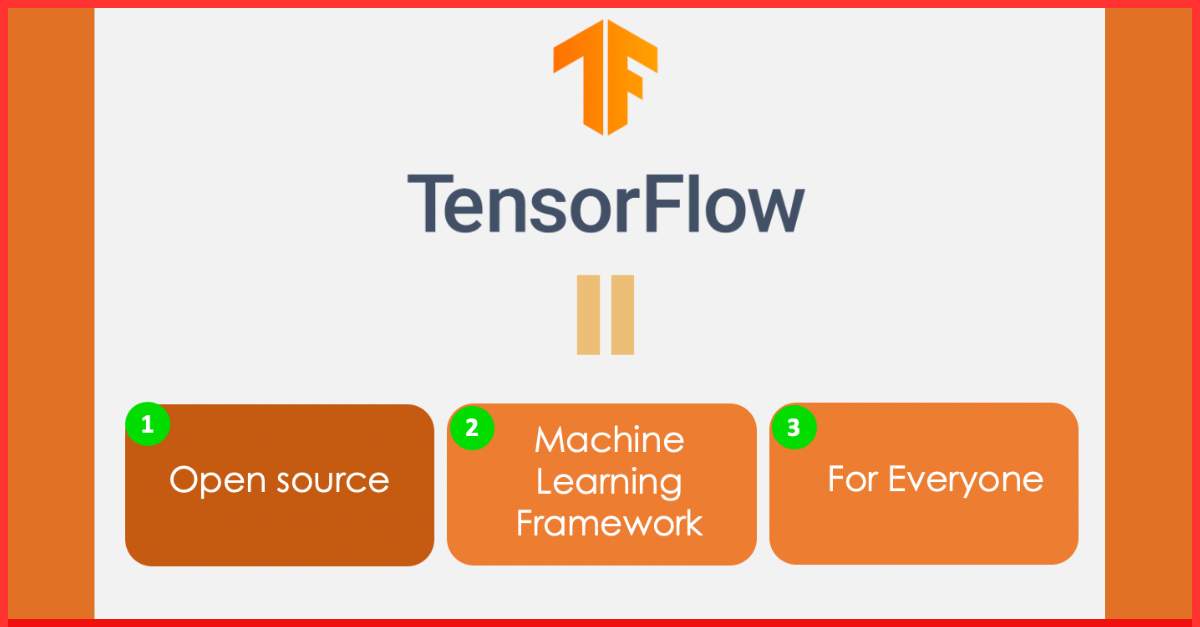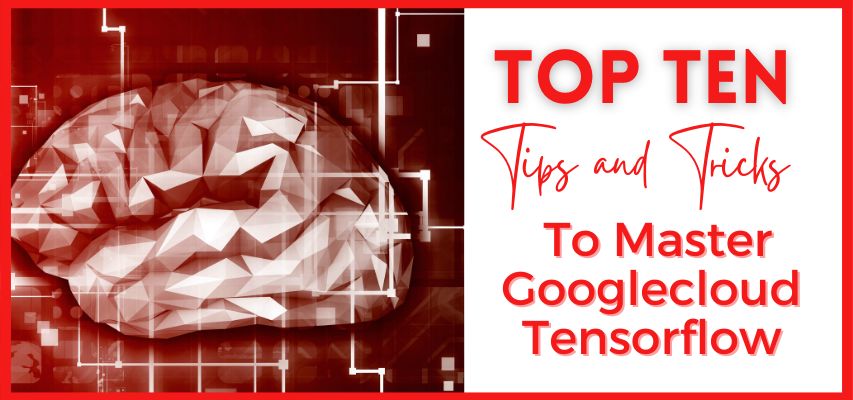Machine learning is one of the most exciting and rapidly evolving fields in computer science today. It enables computers to learn from data and perform tasks that were previously impossible or impractical. However, developing and deploying machine learning models can be challenging and complex, especially when dealing with large-scale data and diverse hardware platforms. That’s where Google Cloud TensorFlow comes in. Google Cloud TensorFlow is a cloud-based platform that provides a comprehensive and integrated set of tools and services for building, training, and deploying machine learning models using TensorFlow, the most popular open-source framework for deep learning. With Google Cloud TensorFlow, you can:
- Access free and easy-to-use tools such as Google Colab and TensorFlow Hub to experiment and prototype your models in your browser.
- Leverage powerful and scalable infrastructure such as Google Cloud Storage, Google Compute Engine, Google Kubernetes Engine, and Google Cloud AI Platform to store, process, and manage your data and models.
- Utilize advanced and specialized features such as Google Cloud TPUs, Google Cloud Vision API, Google Cloud Natural Language API, and Google Cloud AutoML to accelerate your training and inference performance and enhance your model capabilities.
- Deploy your models on various devices and platforms, such as mobile, web, edge, server, and cloud, with tools such as TensorFlow Lite, TensorFlow.js, TensorFlow Serving, and TensorFlow Enterprise.
In this article, we will give you an overview of Google Cloud TensorFlow, explain its meaning, overview, give tips, and tricks that can help you get the most out of it, and answer some frequently asked questions.
Also, read: Top 10 AI Myths You Should Know for 2024
Meaning of Google Cloud TensorFlow
Google Cloud TensorFlow is a combination of two terms: Google Cloud and TensorFlow. Let’s break them down:
Google Cloud is a suite of cloud computing services offered by Google that runs on the same infrastructure that Google uses internally for its end-user products, such as Google Search, Gmail, YouTube, and more. Google Cloud provides various products and solutions for computing, storage, networking, databases, analytics, artificial intelligence, machine learning, security, developer tools, management tools, and more. You can access these services through the Google Cloud Console, the Google Cloud SDK (Software Development Kit), or the Google Cloud APIs (Application Programming Interfaces).
TensorFlow is an open-source framework for machine learning developed by Google Brain. TensorFlow provides a high-level API (application programming interface) called Keras that allows you to easily build and train neural networks using Python. TensorFlow also provides a low-level API that gives you more control and flexibility over the computation graph, the data flow, the operations, the variables, the gradients, the optimizers, the checkpoints, the summaries, and more. TensorFlow supports multiple languages, such as C++, Java, Go, Swift, JavaScript, and more. TensorFlow also supports multiple platforms, such as Linux, Windows, macOS, Android, iOS, Raspberry Pi, and more. TensorFlow also supports multiple hardware devices, such as CPUs, GPUs, TPUs, and more.
Therefore, Google Cloud TensorFlow is a platform that combines the power and flexibility of TensorFlow with the scalability and reliability of Google Cloud to help you build, train, and deploy machine learning models in the cloud.
Also, read: Top 10 Robotic Applications: Exploring the World of Robots and Their Impact
Overview
Google Cloud TensorFlow is a platform that allows you to run TensorFlow models on Google Cloud infrastructure, using various services and tools such as Vertex AI, Deep Learning VMs, Cloud Functions, TensorFlow Enterprise, and TensorFlow Cloud. These services and tools offer different benefits and trade-offs depending on your use case, such as scalability, flexibility, cost, and ease of use.
Unleash the Power Within: The Top 10 Google Cloud TensorFlow Hacks You Need Now
Google Cloud TensorFlow is a powerful and popular platform for building, training, and deploying machine learning models. Whether you are a beginner or an expert, there are always some tips and tricks that can help you get the most out of it. Here are 10 of them:

Tip 1: Use Google Colab for free and easy access to Google Cloud TensorFlow.
Google Colab is a cloud-based notebook environment that lets you run TensorFlow code in your browser without any installation or configuration. You can also access free GPU and TPU resources, as well as pre-installed libraries and datasets. To get started, just go to https://colab.research.google.com and create a new notebook.
Also, read: Unlock AI’s Potential: 10 Deep Learning Techniques in 2024
Tip 2: Use TensorFlow Hub for reusable and pre-trained models and layers.
TensorFlow Hub is a repository of ready-to-use machine learning components that you can easily import and use in your projects. You can find models and layers for various tasks, such as image classification, text generation, object detection, sentiment analysis, and more. To use TensorFlow Hub, just install the TensorFlow-Hub package and import the module of your choice. For example:
import tensorflow_hub as hub
model = hub.KerasLayer(“https://tfhub.dev/google/imagenet/mobilenet_v2_140_224/classification/4”)
Tip 3: Use TensorFlow Datasets for loading and preprocessing data.
TensorFlow Datasets is a collection of high-quality datasets that are ready to use with TensorFlow. You can access hundreds of datasets from various domains, such as computer vision, natural language processing, audio, video, and more. You can also apply common transformations, such as shuffling, batching, caching, and prefetching, to optimize your data pipeline. To use TensorFlow Datasets, just install the TensorFlow-Datasets package and load the dataset of your choice. For example:
import tensorflow_datasets as tfds
ds = tfds.load(“most”, split=”train”, shuffle_files=True)
Also, read: Exploring the Top Ten Deep Learning Frameworks in 2024
Tip 4: Use TensorFlow Addons for extra functionality and features.
TensorFlow Addons is a library of extensions and additions to the core TensorFlow API. You can find useful tools and components that are not available in the standard TensorFlow package, such as custom optimizers, losses, metrics, layers, activations, callbacks, and more. To use TensorFlow Addons, just install the TensorFlow Addons package and import the module of your choice. For example:
import tensorflow_addons as tfa
optimizer = tfa.optimizers.AdamW(learning_rate=0.001, weight_decay=0.01)
Tip 5: Use TensorFlow Model Garden for state-of-the-art models and best practices.
TensorFlow Model Garden is a repository of official and community-contributed models that showcase the best practices and latest advances in TensorFlow. You can find models for various domains and tasks, such as computer vision, natural language processing, recommendation systems, reinforcement learning, and more. You can also find tutorials, guides, benchmarks, and code samples to help you learn and implement these models. To use TensorFlow Model Garden, just clone the repository from https://github.com/tensorflow/models and follow the instructions for each model.
Also, read: Top Ten Augmented Reality App Development Companies in 2024
Tip 6: Use TensorFlow Lite for deploying your models on mobile and edge devices.
TensorFlow Lite is a framework for converting and running your TensorFlow models on devices with limited resources, such as smartphones, tablets, smartwatches, IoT devices, and more. You can reduce the size and complexity of your models without sacrificing performance or accuracy. You can also leverage hardware acceleration and specialized features of different devices to optimize your inference speed and power consumption. To use TensorFlow Lite, just install the TensorFlow-lite package and use the converter tool to convert your model to a .tflite file. For example:
import tensorflow as tf
converter = tf. lite.TFLiteConverter.from_saved_model(“saved_model”)
tflite_model = converter.convert()
open(“converted_model.flite”, “wb”).write(tflite_model)
Tip 7: Use TensorFlow Serving for deploying your models on servers and cloud platforms.
TensorFlow Serving is a system for serving your TensorFlow models in production environments with high scalability, reliability, and performance. You can easily manage multiple versions of your models, handle concurrent requests from multiple clients, update your models without downtime or interruption, and integrate with various frameworks and tools. To use TensorFlow Serving, just install the tensorflow-serving-api package and use the saved_model_cli tool to export your model to a .pb file. For example:
import tensorflow as tf
model = tf.keras.models.load_model(“keras_model”)
tf.saved_model.save(model, “saved_model”)
saved_model_cli show –dir saved_model –all
Also, read: Unraveling the Top Ten Deep Learning Libraries for Neural Network Enthusiasts
Tip 8: Use TensorFlow Profiler for analyzing and optimizing your model’s performance.
TensorFlow Profiler is a tool that helps you understand how your model utilizes the available resources, such as CPU, GPU, memory, and bandwidth. You can visualize and inspect various aspects of your model execution, such as the computation graph, the operation timeline, the memory usage, the input pipeline, and more. You can also identify and fix performance bottlenecks, such as slow operations, memory leaks, data starvation, and synchronization issues. To use TensorFlow Profiler, just install the tensorboard-plugin-profile package and launch TensorBoard with the –profile flag. For example:
pip install tensorboard-plugin-profile
tensorboard –logdir logs –profile
Tip 9: Use TensorFlow Debugger for debugging and troubleshooting your model errors.
TensorFlow Debugger is a tool that helps you find and fix errors in your TensorFlow code, such as shape mismatches, NaN values, infinite gradients, and more. You can interactively inspect and manipulate the tensors and variables in your model at any point during the execution. You can also set breakpoints, watch expressions, filter tensors, and compare results across different runs. To use TensorFlow Debugger, just install the TensorFlow-debugger package and wrap your session or estimator with the tf_debug.LocalCLIDebugWrapperSession or tf_debug.LocalCLIDebugHook classes. For example:
import tensorflow as tf
from tensorflow.python import debug as tf_debug
sess = tf_debug.LocalCLIDebugWrapperSession(tf.Session())
sess.run(…)
Also, read: Top 10 most popular programming languages
Tip 10: Use TensorFlow Documentation for learning and reference.
TensorFlow Documentation is the official source of information and guidance for TensorFlow users of all levels. You can find tutorials, guides, examples, API references, glossaries, FAQs, and more. You can also contribute to the documentation by reporting issues, suggesting improvements, or submitting pull requests. To use TensorFlow Documentation, just visit https://www.tensorflow.org/ and explore the topics of your interest.
FAQs
Q. How do I set up TensorFlow Cloud?
You need to sign up for the Google Cloud Platform, link your billing account to your project, enable the required APIs for TensorFlow Cloud in your project, and create a Google Cloud Storage bucket. You can find more details and instructions here.
Also, read: Top 10 Quantitative Trading Strategies That Work in 2024
Q. What are Google Cloud Functions?
Google Cloud Functions is a serverless computing platform that lets you run code without provisioning or managing servers. You can use it to deploy TensorFlow 2.0 deep learning models in a scalable and economical way. You can find more details and examples here.
Q. How do I deploy inference on the Google Cloud Platform (GCP)?
GCP provides multiple ways for deploying inference in the cloud, such as compute engine clusters with TF serving, cloud AI platform predictions, cloud functions, and TensorFlow serving. You can choose the best option for your needs based on the level of abstraction, control, and performance you require. You can find more details and comparisons here.
Also, read: Top 10 Advanced Robots in the World
Q. How do I create a TensorFlow deep-learning VM?
You can create a TensorFlow Deep Learning VM instance from the Cloud Marketplace, which is preloaded with TensorFlow Enterprise. You need to select a zone, a machine type, a framework version, and optional features such as GPUs and TPUs. You can find more details and steps here.
Conclusion
Google Cloud TensorFlow is a powerful and convenient way to leverage the cloud for your machine learning projects. You can choose the best option for your needs based on the level of abstraction, control, and performance you require. You can also take advantage of some tips and tricks to optimize your workflow, such as using GPUs only when needed, copying data to Colab VMs, using TPUs, training TFLite models on Colab, and more.


































